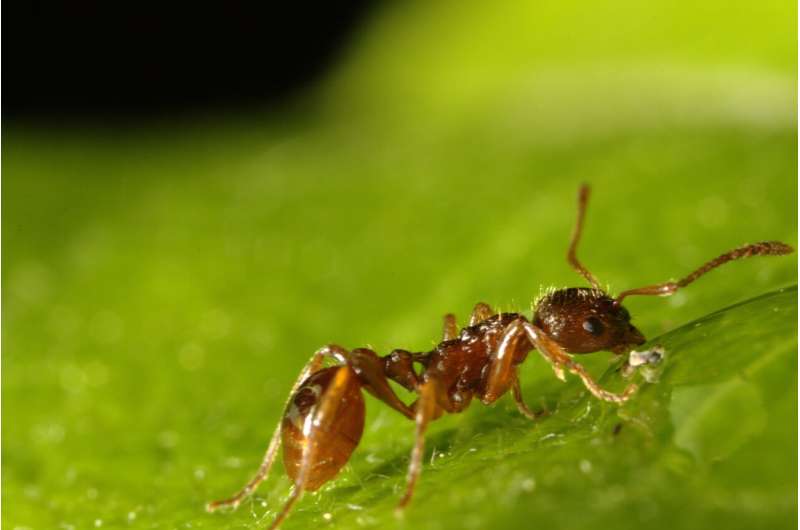Report lifts lid on Australia's international bug superhighway

A new report has identified an international 'bug superhighway' capable of carrying a large variety of environmentally destructive overseas insects into Australia.
The study, led by the Monash University School of Biological Sciences, rated the environmental harm being caused by 100 of the worst overseas insect species and recommends a range of actions to keep them out of Australia.
The most dominant group of invasive insects by far are the hymenopteran insects—ants, bees and wasps—making them the world's most environmentally harmful invasive insect species.
"Our report found that environmentally harmful bugs, beetles, ants and moths are most likely to hitch a ride into Australia along an international bug superhighway made up of imported plants, nursery material and the timber trade," said report author Professor Melodie McGeoch from the Monash School of Biological Sciences.
"Australia is already grappling with large, destructive infestations of invasive insects," she said. "It can't afford any more."
The report identifies the international trade in cut flowers and foliage as a high-risk pathway for more than 70 of the species studied.
Invasive Species Council CEO Andrew Cox said this is the first time Australian and international scientists have comprehensively analyzed which invasive insects overseas are doing the most environmental harm and could therefore threaten Australia's natural environment if they breach the nation's borders.
"Before coronavirus put the world into lockdown there were more than 50,000 merchant ships carrying goods across the globe and some 10,000 planes in the air at any one time," he said.
"Ants, bees and wasps are habitual and versatile world travelers tiny enough to move around the world hidden in goods such as flowers and timber.
"Invasive insects can cost hundreds of millions of dollars to eradicate once they breach international borders. Queensland is already battling red fire ants through a $411 million eradication plan.
"Invasive insects can inflict massive environmental damage. Right now yellow crazy ants threaten Australia's Wet Tropics World Heritage Area, the oldest continuously surviving tropical rainforests on Earth and the most biologically diverse region in Australia."
- The report's 23 recommendations include:
- Develop risk profiles and contingency plans for all high-risk invasive insect species.
- Review biosecurity agency practices to detect and kill invasive insects as soon as they breach Australian borders.
- Impose import conditions to reduce the risks of new invasive insect introductions in the country, especially via unintentional pathways such as contaminated shipping containers.
- Fully implement Australia's Invasive Ants Biosecurity Plan and establish a permanent national body to coordinate biosecurity measures on invasive ants.
- Conduct a comprehensive risk and pathway assessment for other species groups such as animal and plant fungi.
- Establish a national exotic and invasive species data platform that provides comprehensive, up-to-date information for risk assessments.
The Federal Government has been improving its performance in this area with the formation of the new Office of Environmental Biosecurity. The Government has recently developed an invasive ant biosecurity plan (only partly funded) and released a priority list of environmental biosecurity pests (a selection of the worst which only lists 17 insects). Much more work is needed.
Provided by Monash University




















